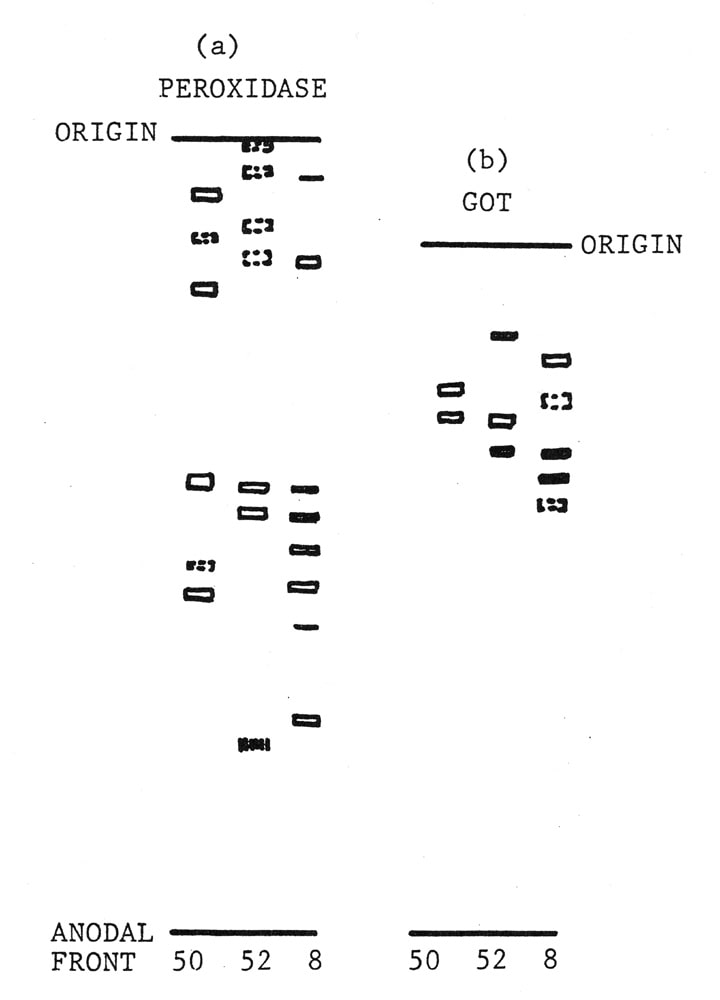Cucurbit Genetics Cooperative Report 12:86-88 (article 36) 1989
V.S. Sujatha and V.S. Seshadri
Division of Vegetable Crops, Indian Agricultural Research Institute, New Delhi 110012, India
Round melon or ‘tinda’ is an Asian cucurbit having a chromosome number of x=12. This taxon was earlier considered as a botanical variety of watermelon, Citrullus lanatus (x=11). Pangalo (8), however, identified distinct morphological and cytological differences between C. vulgaris var. fistulosus(tinda) and C. lanatus (syn. C. vulgaris). There is now general agreement among botanists and cytologists in that round melon requires a separate taxonomic status from watermelon. Khoshoo and Vij (6) and Trivedi and Roy (12) suggested a separate species status for round melon in the genus Citrullus. However, many other scientists are of the opinion that round melon should be put in a different genus, separate from Citrullus (2, 4, 7, 11). Shimotsuma (10) was of the opinion that round melon with x=12 should be placed in the genus Cucumis, along with C. melo whose chromosome number is also 12. However, histological studies by Fursa (3) and analysis of leaf phenolics by Kaur et al. (5) brought out distinct differences between the two taxa.
Tinda is not crossable with either watermelon or muskmelon, but isozymes provided additional evidence for comparison of the two species. Round melon was compared with watermelon and muskmelon for two enzyme systems, peroxidase (PRX) and glutamate oxaloacetate transaminase (GOT). Polyacrylamide gel electrophoresis was carried out at 5°C, using vertical slab gels and a constant current of 40 mA per slab. The gel buffer for all analyses was pH 9.0 tris-chloride, and the electrode buffer was pH 8.3 tris-glycine. Bromophenol blue (0.2%) in imidazole buffer (pH 7.0) was used as a tracer dye, and relative mobility (Rm) was calculated. Peroxidase analyses were made on roots and hypocotyls of 4-5 week old seedlings, with gel concentration of 7% acrylamide and staining adopted from Conklin and Smith (1). Glutamate oxaloacetate transaminase analyses were made on 3-4 day old seedlings, with 9.5 acrylamide gel concentration and staining technique adopted from Shaw and Koen (9).
Seven peroxidase isozymes were found (Fig. 1) at Rm 0.01, 0.04, 0.11, 0.15, 0.44, 0.47, 0.76), different in electrophoretic mobility from the six isozymes found in Citrullus lanatus (Rm=0.07, 0.12, 0.19, 0.43, 0.54, 0.57) and the eight isozymes of Cucumis melo (Rm=0.05, 0.15, 0.443, 0.48, 0.52, 0.56, 0.61, 0.73). In the GOT zymogram, the three isozymes of Praecitrullus (Rm=0.13, 0.26, 0.30) were different from the two found in Citrullus lanatus (Rm=0.22, 0.25) and the four isozymes found in Cucumis melo (Rm=0.17, 0.23, 0.34, 0.38).
Thus, it was found that there was no similarity of Praecitrullus with Citrullus lanatus or Cucumis melo for PRX or GOT, although Zamir et al. (13) noticed similarity between C. lanatus and C. colocynthis for GOT and PRX zymograms. The present study substantiates Pangalo’s classification of round melon in a genus separate from that of watermelon.
Comparing Praecitrullus with Cucumis melo, it was found that the two species did not have any PRX or GOT isozymes in common. The isozyme at GOT4 which was present in the 12 Cucumis species analyzed was absent in Praecitrullus. Thus, the present study disputes the argument of Shimotsuma (10) that round melon should be placed in the genus Cucumis. The indian round melon or ‘tinda’ is unrelated to and different from muskmelon and watermelon. The present study supports Pangalo’s classification of ‘tinda’ under a new genus, ‘Praecitrullus’.
Figure 1. Peroxidase and GOT zymograms of Citrullus lanatus (50), Praecitrullus fistulosus (52) and Cucumis melo (8).

Literature Cited
- Conklin, M.E. and H.H. Smith. 1971. Peroxidase isozymes. A measure of molecular variation in ten herbaceous species of Datura. Amer. J. Botany 58:688.
- Dass, H.C., G.S. Randhawa and M. Kaur. 1974. Phylogenetic studies in Cucumerinae by leaf phenolics. Nucleus 17:103-109.
- Fursa, T.B. 1974. The seed coat anatomy of watermelon as a taxonomic character. Trudy Po Prikladnoi Botanike, Genetikii Seleksii, 51(3):39-48.
- Goljev, V.A. 1963. Comparative embryology of the Cucurbitaceae and its significance for the taxonomy of the family. Botanicheskij Zhurnal 48:80-88.
- Kaur, M. H.C. Dass and G.S. Randhawa. 1973. Systematic status of round melon, Citrullus vulgaris var. fistulosus as studied by leaf phenolics. Curr. Sci. 42:730-731.
- Khoshoo, T.N. and S.P. Vij. 2963. Biosystematics of Citrullus vulgaris var. fistulosus. Caryologia 16:541-552.
- Kurt, J.K., S.D. Deena and D.W. Hugh. 1985. Allozyme differentiation in the Cucurbita pepo complex. C. pepo var. medullosa var. C. taxana. Econ. Bot. 39:289-299.
- Pangalo, K.I. 1938. Living ancestors of cultivated watermelon. C.R. (Doklady) Acad. Sci. URSS. 10:599-600.
- Shaw, C.R. and A.L. Koen. 1968. Starch gel zone electrophoresis of enzymes. In I. Smith (ed.) Chromatographic and Electrophoretic Techniques. Vol. 2, 2nd ed. John Wiley, NY.
- Shimotsuma, M. 1961. Chromosome number of Citrullus species. Chromosome Information Service, Tokyo 2:14-16.
- Shimotsuma, M. 1963. Cytogenetics and evolutionary studies in the genus Citrullus, Seiken Ziho 15:23-24.
- Trivedi, R.N. and R.P. Roy. 1970. Cytological studies in Cucumis and Citrullus. Cytologia 35:561-569.
- Zamir, D., N. Navot and J. Rudich. 1984. Enzyme polymorphism in Citrullus lanatus and Citrullus colocynthis in Israel and Sinae. Plant Systematics Evol. 146:163-170.